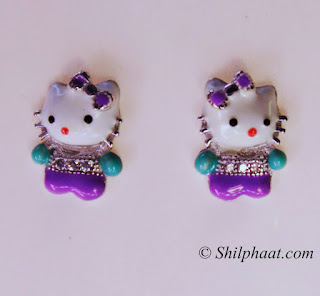 |
| Bagru Block printing |
Bagru is a small city near
Jaipur, Rajasthan, India, Known for its art of textile printing using natural
dyes and handcarved wooden blocks. The tradition of bagru block printing is
centuries old and has been kept alive by "Chippa community." Chippa is derived
from word chapa which means impression. The community is concentrated in locality kown as "Chippo ka mohalla"
 |
| Carving wooden blocks |
Patterns of flora,
fauna and geometrical patterns are drawn paper and then traced on flat surfaced
wooden pieces. The patterns are then hand-carved with high precision
. Printing single textile involves use of many
block, sometimes upto 20 or more. The blocks have to be carved with such
detailing and precision that one block fits and complements other to
complete a pattern.
 |
| Trolly with color and blocks |
Most prominent colours are black, Madder Red, indigo, Yellow and Green. The dyes are prepared with
natural things like turmeric for yellow and plant based indigo for blue,. Black is prepared
by fermenting iron in jaggery mixture and so on.
The undyed fabric is then
soaked in muddy water and then sun dried. The process rids fabric of starch and other impurities
and makes it more absorbent for colors too. The dried fabric is then laid on long
table and an artist, with a trolly beside him carrying color soaked sponge and
blocks, starts printing.
 |
| Conditioning fabric for Block-printing |
Bagru is a painstakingly laborious and time taking process.
One saree may take 2-3 days for printing. Due to the time involved and precision
required, most families have moved to
Very few families are now involved in bagru handblock printing. Besides, fast and easy screen printing is also posing serious threat to industry.
Shilphaat.com has brought Bagru block printed textiles from artist Mr. Purshottam Chippa at its store.
Very few families are now involved in bagru handblock printing. Besides, fast and easy screen printing is also posing serious threat to industry.
Shilphaat.com has brought Bagru block printed textiles from artist Mr. Purshottam Chippa at its store.
Shop Online Handblock -printed
Dupatta,
https://www.shilphaat.com/Hand-Block-Printed-catid-1277782-page-1.html
Dress-material,
https://www.shilphaat.com/Dress-Material-catid-890013-page-1.html
fabrics
https://www.shilphaat.com/Precut-Fabric-catid-1184565-page-1.html
and sarees at:
https://www.shilphaat.com/Sarees-catid-1088208-page-1.html














